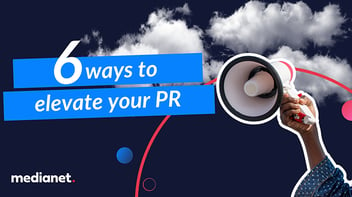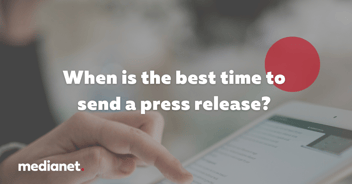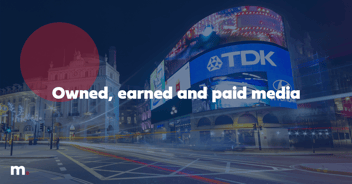Three PR roadblocks that are surprisingly easy to overcome
 There are many reasons why a business might look to implement a PR strategy. Maybe they want to be prepared for crisis management, or want to take full advantage of earned media. Whatever the reason, understanding some of the roadblocks you may face and preparing for them will put you in a much better position to succeed in the world of earned media.
There are many reasons why a business might look to implement a PR strategy. Maybe they want to be prepared for crisis management, or want to take full advantage of earned media. Whatever the reason, understanding some of the roadblocks you may face and preparing for them will put you in a much better position to succeed in the world of earned media.
So, what are some of these roadblocks? And how can you address them?
1. Lack of strategy / plan / direction
A PR strategy without a plan or direction can easily lead to ineffective campaigns and low return on investment (ROI). Creating a plan in advance can form the backbone of your PR strategy and set you in the right direction to deliver effective results. Consider the following when creating your plan:
-
What do you want to achieve? What does success look like and how will you measure it?
-
How will you be targeting your PR strategy? What audience will be most relevant and how do they prefer to receive communication from you?
-
What type of activities will you engage in? How will these differ from each other? E.g. a press release for a new product launch vs a press release for a crisis.
A Pepsi campaign in 2017 gives us a great example of what can happen when your PR strategy isn’t clearly thought out. Their campaign, which featured Kendall Jenner offering a police officer a Pepsi during a protest, trivialised the ongoing protests at the time, resulting in backlash at the company. From this, we can learn the importance of planning your strategy with current global events in mind and being sensitive to the causes they represent.
2. Difficulty in finding relevant media contacts
No matter how good a media release is, it still needs to be delivered to the right audience, at the right time, in the right format. But finding that audience can be tricky without spending countless hours scouring media websites and publications.
The easiest way to overcome this is through the use of PR software, which can allow you to search for contacts and create lists using very specific filters related to your target audience. This saves you a significant amount of time while also allowing you to get very targeted with your audience.
When it comes down to deciding if PR software is right for you, look at the value of the time you are spending to complete these tasks and compare it to tools that can do it for you. PR software can save you valuable time and even improve the effectiveness of your campaigns.
3. Measuring the success or proving ROI of a media release / PR activity
Measuring the value and ROI of earned media can be tricky when you are unsure of what to look for. Start by going back to your plan and looking into your goals, this should give you a good idea of what you need to measure. Different PR activities may have different goals or outcomes, as such, they will need to be measured differently. For example, if your campaign was focused around the launch of a product, you could track an increase in new sales. If the campaign focused on brand awareness, then you could track changes in website traffic or social mentions.
A great example of this comes from the Victoria & Albert Museum in London. An exclusive exhibition in 2013 featuring the David Bowie Archive required heavy investment in PR and marketing. This resulted in the need for clear reporting to evaluate the value of their PR activities, which was achieved with a clear, well-defined goal and well-timed activities which allowed them to isolate the effect of various campaigns.
Preparing yourself for these roadblocks before they happen could be the key to successfully navigating the world of earned media — and it’s easier than you think.
If you have any thoughts on these roadblocks or need help with your own media strategy, let us know!




